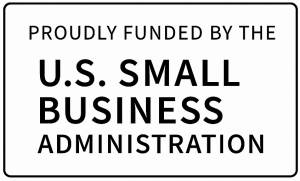By Matt Lhoumeau, CEO of Concord
When’s the last time you actually read an entire contract, word for word, before signing it?
I’ll wait.
If you’re being honest, the answer is probably “never” or “not since law school.” And that’s exactly the problem.
After 10 years of watching how companies really handle contracts, I’ve come to a simple conclusion: the way we write contracts today is absurd. It’s like we’re still using quill pens and parchment in the age of AI.
The problem with contracts today
Current contracts are torture devices disguised as business documents. They’re:
- Bloated with language nobody reads
- Filled with clauses that rarely matter
- Formatted to be as unfriendly as possible
- Designed by lawyers to impress other lawyers
The World Economic Forum estimates inefficient contracts cost the global economy over $2 trillion annually. That’s not a typo—trillion with a T.
But the real problem isn’t just cost. It’s that contracts don’t do what they’re supposed to do: clearly communicate what two parties have agreed to.
When I worked for the second-biggest telecom company in France years ago, the CEO asked me to renegotiate a thousand vendor contracts to save money. I spent six months just finding the contracts in file cabinets, then months reading them one by one, building a massive spreadsheet with 52 columns and 500 rows just to understand what we’d agreed to.
This experience haunts me to this day—and it’s why I built Concord. Nobody should suffer like that.
Why tables are the future
Here’s a radical idea: what if contracts were designed so people could actually understand them?
In a rational world, contracts would be simple tables showing exactly what matters:
| Term | Details |
| Parties | Acme Corp & WidgetCo |
| Product | 1,000 widgets |
| Price | $100,000 |
| Delivery date | March 15, 2025 |
| Payment terms | Net 30 |
| Renewal | Auto-renews annually |
| Termination | 60 days notice |
That’s it. That’s your contract.
If you’ve worked on complex deals, you’ve seen this already. What do sophisticated parties do when negotiating a complicated acquisition or financing? They create a term sheet—a simple document, often in table format, that captures the essential terms.
Meanwhile, the actual contract becomes a 100-page monster that few people read in its entirety. The term sheet is what people actually use.
AI is speeding up this transformation
AI isn’t causing this shift—it’s accelerating what was already inevitable.
Modern procurement contract management software is already using AI to extract key data points from traditional contracts and present them in simplified formats. We’re essentially creating the table view after the fact.
But why wait? Why not just create contracts as structured data from the beginning?
Some pioneers are already doing this. The Harvard Law School Contract Reform Project is developing “visual contracts” that replace dense text with tables, flowcharts, and visual elements. Their research shows these formats improve comprehension by 80% while reducing review time by over 50%.
The OneNDA initiative has created standardized, simplified NDAs that cut the average non-disclosure agreement from 4-5 pages to just 2, focusing only on what’s essential. Over 500 companies have already adopted them.
Why you might be skeptical (but shouldn’t be)
When I talk about simplifying contracts, I hear the same objections:
“But what about edge cases?”
“What about liability protection?”
“What about regulatory requirements?”
These concerns assume the current approach is working. It’s not. Most contracts today are:
- Never read fully before signing
- Not checked for compliance after signing
- Poorly understood by the people implementing them
- Difficult to search or analyze systematically
Using contract analytics software, we’ve discovered that 90% of contract disputes don’t involve the complex clauses lawyers spend hours negotiating. They involve basic facts: price, delivery date, renewal terms, and termination rights.
The current approach is like buying expensive insurance for a risk that rarely materializes, while leaving your front door unlocked.
The 10-year timeline
This transformation won’t happen overnight, but it will happen faster than most people think:
Years 1-3: AI increasingly extracts and presents contract data in simplified formats after documents are signed.
Years 3-5: Companies adopt pre-simplified contracts for standard agreements, starting with NDAs, employment contracts, and routine vendor agreements.
Years 5-7: Enterprise companies begin demanding simplified formats from their suppliers and partners.
Years 7-10: Traditional contracts become the exception, used only for the most complex, high-stakes transactions.
The International Association for Contract and Commercial Management predicts that by 2030, more than 60% of business contracts will be in simplified, visual formats rather than traditional text documents.
What this means for your company
If you’re running a business, here’s what you should be doing right now:
- Audit your current contracts. How many of them are needlessly complex? How many could be simplified into basic terms?
- Start with your templates. Take your standard agreements and ruthlessly simplify them. Cut everything that isn’t essential.
- Focus on usability. Ask yourself: would a non-lawyer understand our contracts? If not, they’re not working.
- Embrace the table view. Even before you change your contracts, start presenting the key terms in table format to your team.
We’ve already seen this with companies using our platform. One construction firm reduced their subcontractor agreements from 15 pages to a 3-page document with most terms presented in a simple table. Their compliance improved and disputes dropped by 40%.
Where lawyers fit in this future
For the legal professionals reading this: I’m not saying you don’t matter. I’m saying your value isn’t in crafting Byzantine contractual language.
Your true value is in:
- Understanding the business goals behind agreements
- Identifying and mitigating real risks
- Providing strategic guidance on complex negotiations
- Resolving disputes when they arise
The lawyers who thrive in the next decade will be those who embrace simplicity and clarity, not those who cling to complexity for complexity’s sake.
The choice is simple
The contract of the future is a simple, clear table of terms—not 25 pages of legalese. This isn’t just my opinion after a decade in this industry. It’s where all the data and trends are pointing.
Some companies will lead this change. Others will be dragged into it kicking and screaming. The winners will be those who recognize that contracts exist to facilitate business, not complicate it.
Is your company ready to simplify?
Matt Lhoumeau is the co-founder and CEO of Concord, a contract management platform used by over 1,500 SMB and mid-market companies worldwide. Before moving to the US, Matt worked alongside iconic leaders like former French President Nicholas Sarkozy and founded his first company at age 17.




